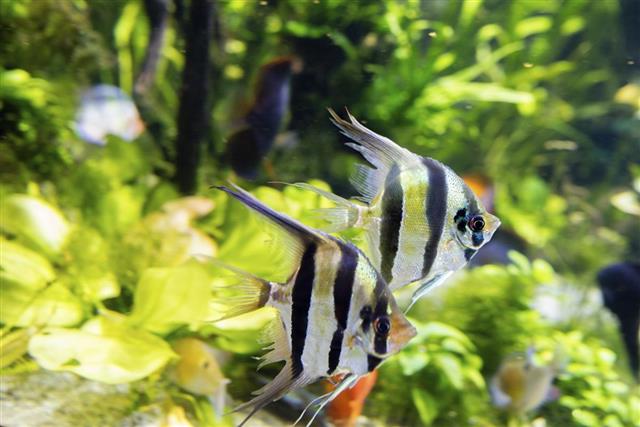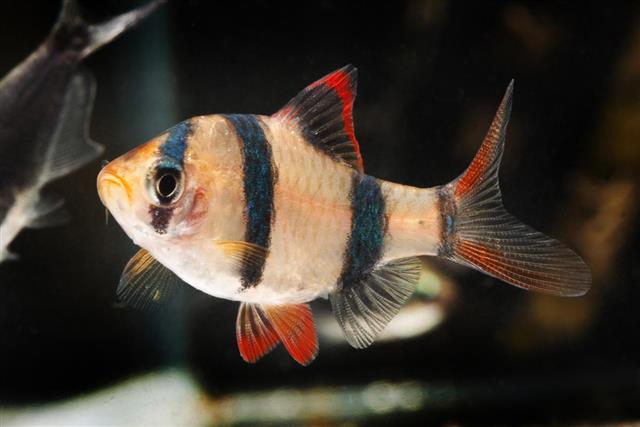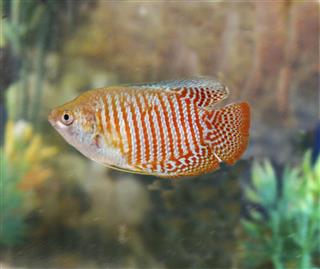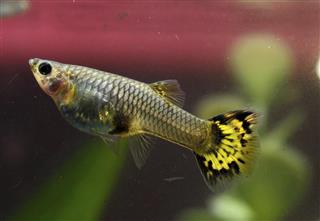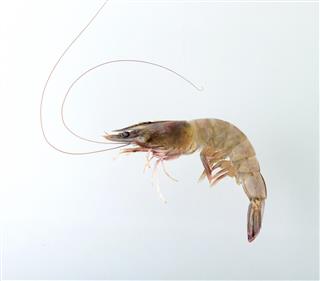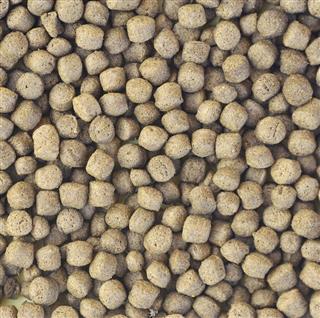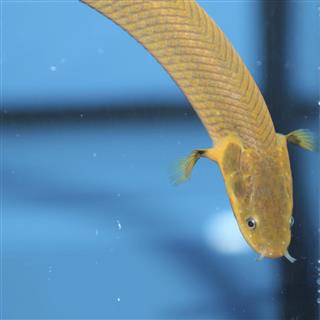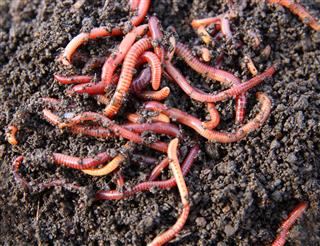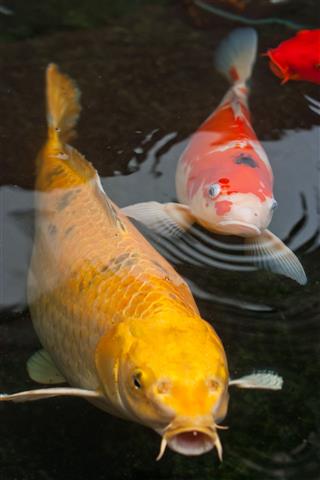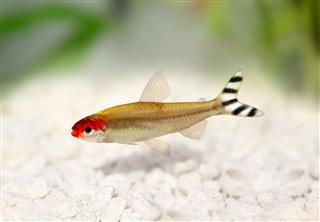
The rope fish can be a great addition to any aquarium due to its snake-like appearance and docile nature. In this PetPonder article, we will discuss everything you need to know about this fish, the facts you need to consider before bringing this fish home, and other rope fish care tips.
Rope fish are an ancient species. Fossils reveal that these fish have been swimming in Earth’s waters for more than 75 million years, successfully weathering numerous natural catastrophes.
Rope fish also known as reed fish (Erpertoichthys calabaricus) are a freshwater fish species, that belong to the bichir fish family. Native to parts of Africa, these fish are found in the Chiloango river in Congo, and the Ogun river in Nigeria. They are great for community fish tanks, which hold non-aggressive species. Caring for rope fish is not very difficult, because of their calm disposition. Regular feeding and cleaning of the tank, along with some arrangements to keep them contained in the aquarium, will keep your rope fish healthy, and give them a long lifespan.
Identifying a rope fish is very easy. It has a long and slender body with a scaly pattern, which gives it the appearance of a braided strand of rope. It can grow to around 17 inches in length, and the fish lacks the presence of ventral fins. Their pectoral fins usually have black spots at the base. The dorsal fin of the fish is divided into 10-12 sections; however, since these fins are usually kept flat, it is difficult to see them. Their anal fins are also not seen very easily. It is important to note that the sex of the rope fish can be determined by studying the anal fins. The anal fins of a male are broader and separated by 12-15 rays, usually separate from the caudal fin. While the female’s anal fin is separated by only 8-12 rays, eventually merging with the caudal fin. The fish may be green or gray in color, with yellow or white undersides.
Rope fish are gentle and inquisitive in nature. However, because of their docility, they will usually be attacked by aggressive tank mates. The fish are considered to be great escape artists, as they can easily slither through small crevices, and frequently attempt to jump out of the aquarium. A unique feature of a rope fish is that it can survive out of water for hours, because it possesses both lungs and gills. The fish are mostly nocturnal; however, they occasionally do come out during the day. Rope fish have poor vision, but a good sense of smell, which they use to search for food.
The most important factor of rope fish care is to set up a suitable habitat. Let us look at the basic tank requirements:
- Space: These fish require a lot of space to swim around. Ordinarily you should have 50 gallons of water, for each rope fish. Also, a tank with a wider floor space is preferred to one with less floor space, but high volume.
- Securing the Habitat: Another important factor to consider while buying the tank is to have a secure covering for the tank. The escape artist attitude of the fish means that even a small gap in the cover can become a means of escape. You should be able to lock the lid of the tank, because the rope fish has been known to even push open closed lids! Open-ended filter systems can be death traps. Therefore, you should properly secure these areas before releasing the rope fish into the tank. One good news is that if the fish does escape the tank, it will not die immediately. Its lungs will keep it alive for a long time, making it easy for you to rescue your rope fish in time.
- Tank Decorations: Although the rope fish can survive in unfurnished tanks, it is advised that the tank should have a thick layer of fine aquarium sand on the bottom. Try to avoid pebbles or larger stones. The tank should also have a large portion of the tank with aquatic plants, of which some should be rooted and the others floating. Java fern, amazon sword, and crystalwort are some of the preferred plant species for this purpose. Also, you should have concealing spots such as driftwood, or commercially manufactured caves and shelters. It is important to also leave considerable open space for the rope fish to swim freely.
- Light and Oxygen Needs: The rope fish likes to live in dark and swampy areas, and as such, the tanks should have only have enough light for the plants to grow. The gills of a rope fish are not very effective, and the fish is highly reliant on breathing atmospheric oxygen through its lungs to survive. Therefore, there should always be at least an inch of open space between the surface of the water, and the tank cover. This will allow the fish to regularly come to the surface for a breath of air. Failure to do so can endanger its life.
- Quality of Water: Water quality is an important factor in extending the lifespan of a rope fish. Ideally, the temperature of the water in the tank should range between 70-80 degree Fahrenheit, and the pH should range between 6.0-7.0. Excessive ammonia level in the water is also harmful for the fish. The maximum level of ammonia in a healthy environment should not be more than 8 ppm at any time. A good filtration system and weekly 20% water changes are very important. It is also important to clean the bottom sand and plants from biological waste, such as rope fish feces and uneaten food, during these water changes. It is always a good idea to have devices like a thermometer and pH indicator fixed in the tank before the fish are put inside.
Another important rope fish care factor is the diet. Young rope fish need two small meals everyday, while adults need a larger meal once in a couple of days. Most rope fish prefer eating live food, and while they will be reluctant to eat commercially made fish food initially, with some time, they can learn to eat flakes or small pellets. Live shrimp, worms, larva, or tiny pieces of fish are loved by the rope fish. However, due to their segmented nature, the bodies of shrimp and worms can break while eating, and pollute the tank, making it important to change the water often. To save yourself the trouble, try live feeder fish like guppies. Rope fish tend to swallow their food whole, hence large and hard pieces of food can present a choking hazard. Hence, it is best to soak and soften flakes or pellets in a bowl of water before feeding.
It is always best to have 2-3 rope fish in the tank rather than just one, as these fish love the company of their own kind. If you do want to add other types of fish in the tank, make sure that they are of a non-aggressive type. The docile nature of the rope fish will make it a target for aggressive fish varieties. On the other hand, the rope fish is a born predator, so any small-sized fish, that can fit in its mouth can get eaten by the rope fish. Non-aggressive, medium, and large-sized tank mates such as barbs, angelfish, bala sharks, and big gouramis are ideal partners with rope fish. Housing the rope fish with cichlids can be risky, as they are usually aggressive in nature. However, you will have a better chance, with discus or Bolivian ram ciclids, as they are not as aggressive, and will add color to your tank as well.
Rope fish have got a long lifespan of 15-20 years. Hence, they need a dedicated owner, for their care. Rope fish are usually resilient to most waterborne pests and diseases. However, bad water quality, poor food, or introduction of diseased fish can cause the following health problems.
- Cotton mouth: This is a bacterial infection that usually stays around the mouth of the fish. You will notice a cottony fungus like growth on the lips and around the mouth of the rope fish, and there will be a marked decrease in its appetite. A consultation with a specialist vet can give you the appropriate medication for this disease.
- Dropsy: This bacterial disease usually occurs when the tank conditions are poor, and can make the fish appear bloated due to excess release of body fluids. This disease needs to be treated early, or it will be fatal. Commercial treatments are available for this disease in good pet shops or specialist stores.
- Velvet: This is a parasitic disease, which can be fatal if untreated. The symptoms are aggressive swimming by the fish, yellow or white powder on the body, and difficulty in breathing. Raising the temperature of the water slightly, addition of a little sea salt in the water, and a commercial medication, can cure this condition.
- Swim Bladder Disease: This is the most common disease to affect rope fish. The symptoms are abnormal swimming, lethargy, and loss of balance while swimming. Unfortunately, there are no sure cures for this disease, and it is mostly fatal. It is important to quarantine the sick fish from the others in a separate tank immediately, to avoid the spread of disease.
- Pop Eye: As the name suggests, this bacterial disease makes the eyes protrude from its head. Sometimes, the eyes may be cloudy. Poor water or food can cause this disease. Although hard to treat, an appropriate antibiotic medication may be able to help.
Breeding rope fish is a very hard task in captivity, and most rope fish are caught from the wild. However, if you do have a male and female pair, then there is a small chance where you can successfully breed babies, with the following procedure
- The important thing to remember is that you increase the chance of getting fertile eggs if you have a healthy amount of plants in your tank, as rope fish like to mate in between vegetation.
- After mating, the eggs usually stick to the surrounding plants and rocks. As the parents may eat the eggs, you must remove the eggs along with the plants they are stuck to, and transfer them to another tank with ideal water conditions.
- After 3-4 days, the eggs which have been fertilized will hatch into small tadpole-like creatures, which will again stick to their surroundings unless disturbed. The babies do not need to be fed during this stage, as they use their attached yolk sacks as their food source.
- After around 2 weeks, the babies will have grown slightly, their yolk sack would be almost fully absorbed by the babies. Now, the babies should be ready to accept food. Use tiny food items like brine shrimp babies, and clean up any debris or uneaten food after feeding is done.
- When the rope fish babies start to move, you must separate them from each other, as the bigger ones might cannibalize the smaller babies. You can bring them together when they are a few inches long.
- It is important that the water conditions, food and security of the tank is at optimum levels throughout the process, to increase the chance of success.
So, by following the above tips of having a large, secure tank, good filtration system, live plants, and good food, you can ensure that your snaky pet has a long and happy life.
